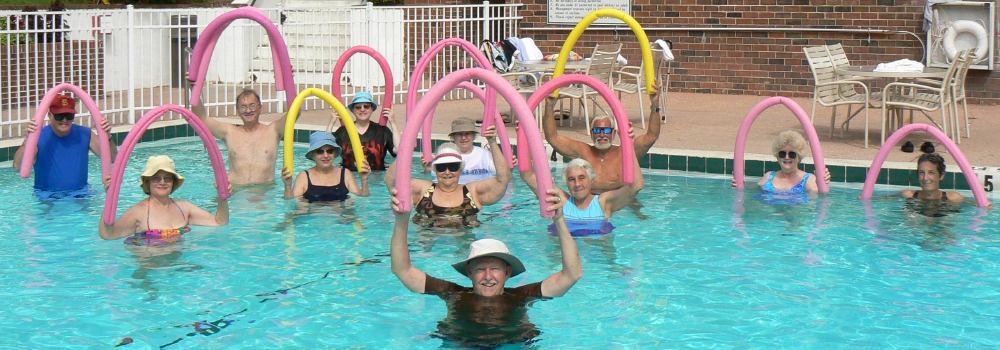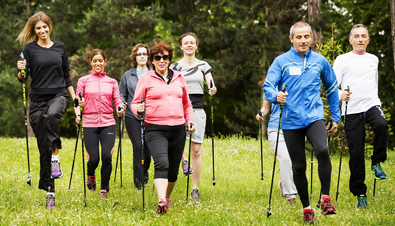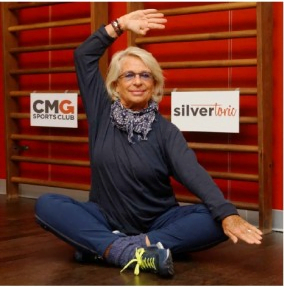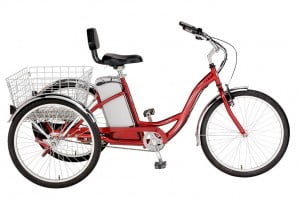One French person out of two aged between 55 and 64 years old practices a physical activity. Sport is not limited to young people, it’s even strongly recommended for the elderly.
Precautions are to take before starting practicing any sport, some studies show that exercise allows to prevent the consequences of falls and reduces loss autonomy risks.
Some sports, whether calm or more energetic, are specifically adapted to the elderly.
Here is an overview and some pieces of advice about physical practices adapted to the elderly.

The benefits of sports for the elderly
From the age of 50, muscle mass and overall strength are reduced by 40 up to 50% depending on everyone.
With ageing, shortness of breath gets higher, gaining weight is common and physical balance gets weaker. The elderly’s capacity to remain independant is reduced, falls risks are higher. Staying inactive could be risky for the elderly. In order to fight these consequences, the soft exercise can be a great therapy.
In this way, physical activity allows to:
- Reduce falls risks
- Reduce obesity risk
- Reduce stress and prevent heart diseases
- Contribute to the decrease of cholesterol
- Fight against the osteoporosis
- Improve the immune system
- Maintain muscle mass
- Create a social link, reduce the risk of depression
Taking into account your physical condition before starting any sport
Before devoting yourself to a new physical and sports activity, it’s necessary to know and consider your abilities.
It’s important to talk about it with a treating doctor or with any sports medicine doctor, in order to verify if the activity is adapted to your health condition.
Some supplementary pension funds suggest to their insured persons to do medical reports; then, according to results, they can adapt their exercise habits to their physical condition.
In any case, it’s necessary to take a few precautions when you go back to a sport:
- Don’t go into a physical activity overnight: the training must be progressive.
- The regularity is important to get good resultats and avoid injuries.
- Avoid sport competitions and violent efforts.
- Carry appropriate equipment: choose adapted shoes and clothes.
- Caution with hypothermia (aka body temperature’s fall) and with dehydration. It is necessary to drink regularly.
- …
Which sports are better for the elderly?
Once all these precautions are taken, it is still not obvious to know which sports are recommended for the elderly. Indeed, physical performances after you reach 50 years old are quite different from those you get at age 20. Furthermore, fitness and flexibility can be improved at any age.
Some sports are not recommended if the person never practiced it before, such as skiing or the racket sports, tennis and squash which can overstress body joints.
Running could be also too exhausting for the elderly’s heart and knees.
However, many sport are available to the elderly.
Yoga
This ancestral discipline aims to harmonize the body and the spirit. It’s based on soft sequential movements and breath techniques which relax muscles. Yoga also tones up the internal organs and softens the body’s joints.
Some yoga positions relieve pains, especially those of the back.
Nordic walking
According to Iowa university research, walking 15 minutes per day would be enough to extend life by 3 years.
Nordic walking is a traditional sport practised in Scandinavia to walk quickly in snowy fields. Contrary to traditional walking or to hiking, the Nordic walking is practised with sticks in carbon fibre.
Pushing the sticks both vertically and horizontally exercise arms, pectoral muscles, shoulders and gluteal muscles. This well-balanced and harmonious exercise of endurance generates fewer impacts and shocks than running. Indeed, sticks reduce over one third of the weight that impact knees.

Gymnastics
Concerning indoor gymnastics, movements can be adapted for the elderly. The exercises are generally practised in groups and they allow to strengthen and to tone up the body.
 Aqua-gym is a softer practise: it is originally a re-education method used by professional sportsmen. It has spread to the general audience greatly over the last 15 years.
Aqua-gym is a softer practise: it is originally a re-education method used by professional sportsmen. It has spread to the general audience greatly over the last 15 years.
In the swimming pool, you feel light, because the body weighs less than a tenth of its actual weight. The muscular work is more intense than in a gymnastic class, without you being aware of it.
Gym memory is a less known discipline but it trains coordination, memorization and concentration in a fun way. It’s particularly recommended to prevent Alzheimer.
Body-building is beneficial if it’s reasonably practised to keep a good muscle mass.
Tai Chi Chuan
This traditional Chinese practise harmonized with more modern therapeutic exercises over time.
Tai-Chi allows the elderly with health problems such arthritis or heart troubles to maintain a beneficial physical activity. This sport can strengthen the muscle tone, improve balance and flexibility, thanks to fluid and slow movements.
However, it is essential to have coachs especially trained and formed to work with the elderly.
Besides its positive effects on heart and muscles, martial arts are recommended to prevent falls by improving movements balance and coordination.
Outdoor activities

Archery and golf both allow to get some fresh air and to develop coordination and agility.
Biking is well adapted for those who suffer from degenerative osteoarthritis in their hips, ankles and knees (except in cases of severe degenerative osteoarthritis of the knee) or those who have an excessive weight.
However, beware of hidden competitions between friends! These challenges often start jokingly but they can bring you to exceed your limits without being aware of it and can provoke a heart attack.
Unusual activities
The “walking stick defence” is a more unusual, useful and therapeutic activity. It helps working on your balance, creating social links by roleplaying as an aggressor or an attacked person. Originally, the walking stick was a tool of self-defence, but it is aso used by people who have Alzheimer today.
Finally, the elderly don’t think often about it, but video games, in particular the “Wii therapy”, are recommended to them thanks to playful exercises, which are sometimes even practised in longterm care establishments, it is possible to work your balance, to maintain your physical shape or to stimulate your memory with it.
Beginning any sport is usually an easy step: however, maintaining your efforts requires to respect some rules. It is necessary to avoid too many constraints to practise sport. Working out has to remain a pleasure: it can be therapeutic, but needs to remain playful above all.
It is necessary to keep in mind that the frequency and duration of physical practise have to remain reasonable: do not push yourself.
This list is obviously non-exhaustive: please, don’t hesitate to tell us which sports you practise, and which ones are adapted to the elderly.
Recently, a septuagenarian beat three cycling world records. It is a good proof that physical activity is possible at any age with a enough goodwill, self-confidence and a knowledge of your limits. So, there’s no such word as can’t!
Published by the Editorial Staff on

It is nice to know that sports for elderly will allow them to get fresh air as well as to become more agile and coordinated. This would be great for my mother who is looking into master packages to access these benefits. I think that it would be nice for her to work on these skills to make herself better.
Hiya very cool blog!! Man .. Beautiful ..
Superb .. I will bookmark your website and take the feeds additionally?
I am glad to seek out so many helpful info here within the post, we want develop extra techniques
on this regard, thanks for sharing. . . . . .
Thanks so much for this information. I’ve seen that seniors who find their mobility to be lessened, time outside can be exactly what the doctor ordered!
Here is another post I found that can add some ideas to the topic.
geoguardpro.com/outdoor-health-benefits-with-high-tech-wander-management/
Thanks
Great stuff. I always wonder why older people don’t exercise. I’m 75 run 3 miles a day with 10 miles bouts, 5days a week weights work-out, a bit of yoga, stretching , abs. No booze, no smoke, vegetarian. If I can’t at least run I die. So I have done it for 60 years in all continents. Yes you get old but a lot different than a sedentary life!!!
AJ